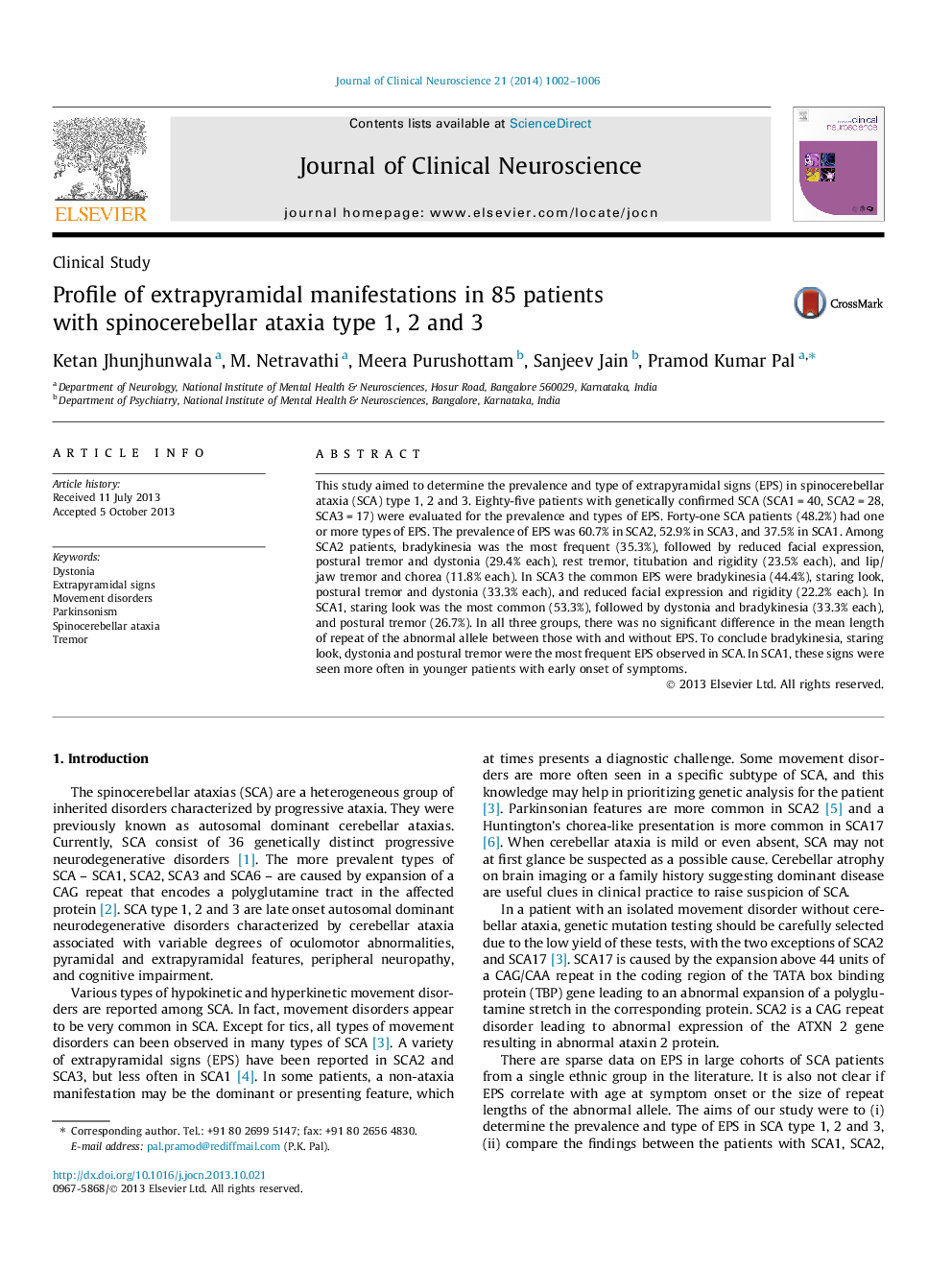| Article ID | Journal | Published Year | Pages | File Type |
|---|---|---|---|---|
| 3059500 | Journal of Clinical Neuroscience | 2014 | 5 Pages |
This study aimed to determine the prevalence and type of extrapyramidal signs (EPS) in spinocerebellar ataxia (SCA) type 1, 2 and 3. Eighty-five patients with genetically confirmed SCA (SCA1 = 40, SCA2 = 28, SCA3 = 17) were evaluated for the prevalence and types of EPS. Forty-one SCA patients (48.2%) had one or more types of EPS. The prevalence of EPS was 60.7% in SCA2, 52.9% in SCA3, and 37.5% in SCA1. Among SCA2 patients, bradykinesia was the most frequent (35.3%), followed by reduced facial expression, postural tremor and dystonia (29.4% each), rest tremor, titubation and rigidity (23.5% each), and lip/jaw tremor and chorea (11.8% each). In SCA3 the common EPS were bradykinesia (44.4%), staring look, postural tremor and dystonia (33.3% each), and reduced facial expression and rigidity (22.2% each). In SCA1, staring look was the most common (53.3%), followed by dystonia and bradykinesia (33.3% each), and postural tremor (26.7%). In all three groups, there was no significant difference in the mean length of repeat of the abnormal allele between those with and without EPS. To conclude bradykinesia, staring look, dystonia and postural tremor were the most frequent EPS observed in SCA. In SCA1, these signs were seen more often in younger patients with early onset of symptoms.
